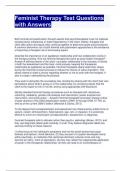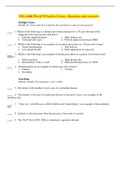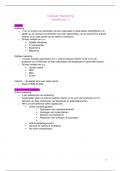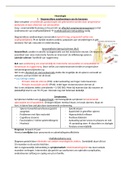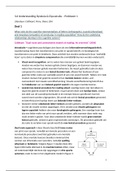Exam (elaborations)
Feminist Therapy Test Questions with Answers
- Module
- Institution
Feminist Therapy Test Questions with Answers Both feminist and postmodern thought asserts that psychotherapists must not replicate societal power imbalances or foster dependency in the client. Rather, therapist and client take active and equal roles, working together to determine goals and proc...
[Show more]
